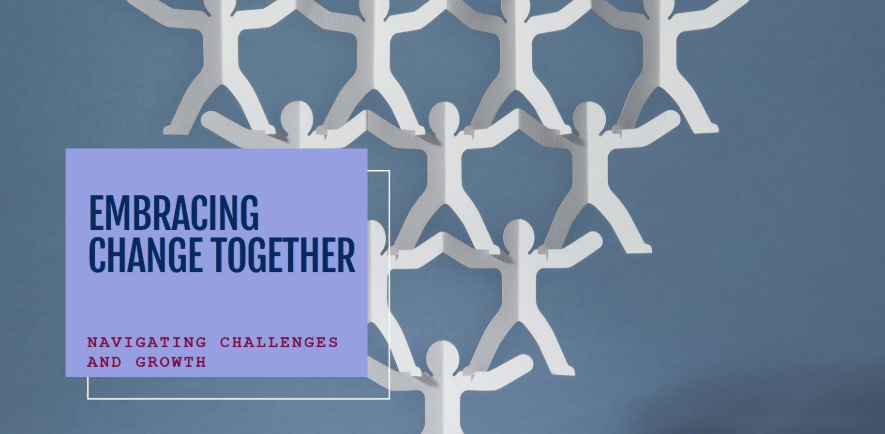The Impact of Resistance to Change on Employees: Causes, Consequences, and Coping Strategies
2/16/20254 min read


Resistance to change occurs when employees react negatively to new processes, technologies, or organizational shifts. This resistance can manifest in various ways, such as:
Openly criticizing or complaining about the change.
Procrastinating or avoiding tasks related to the change.
Feeling anxious, stressed, or overwhelmed.
Clinging to old habits or routines.
While resistance is a natural human response to uncertainty, it can hinder personal growth, create stress, and damage professional relationships if not addressed effectively.
Why Employees Resist Change
Employees resist change for a variety of reasons, including:
Fear of the Unknown: Change often brings uncertainty, which can make employees feel insecure about their roles or job security.
Comfort with the Status Quo: People tend to prefer familiar routines and processes, even if they’re not optimal.
Lack of Trust: If employees don’t trust leadership, they may doubt the motives behind the change.
Poor Communication: Employees may resist change if they don’t understand its purpose, benefits, or how it will affect them.
Perceived Lack of Control: Change can make employees feel powerless or excluded from decision-making.
The Impact of Resistance to Change on Employees
Resistance to change can have significant consequences for employees, including:
Increased Stress and Anxiety: Uncertainty about the future can lead to emotional strain.
Decreased Productivity: Resistance can distract employees from their work and reduce their efficiency.
Strained Relationships: Resistance can create tension between employees and their colleagues or managers.
Missed Opportunities: Employees who resist change may miss out on opportunities for growth and advancement.
Career Stagnation: A reluctance to adapt can hinder professional development and limit career prospects.
10 Real-World Examples of Resistance to Change Among Employees
Here are 10 examples that illustrate how resistance to change can impact employees in the workplace:
1. Fear of Job Loss Due to Automation
An employee in a manufacturing role resists the introduction of automated machinery because they fear it will replace their job. They avoid learning how to operate the new equipment, which limits their ability to contribute effectively.
Impact: The employee feels stressed and undervalued, and their job security becomes uncertain.
2. Reluctance to Learn New Software
A team is asked to adopt a new project management tool, but one employee resists because they’re comfortable with the old system. They continue using outdated methods, which creates inefficiencies for the team.
Impact: The employee falls behind their peers and struggles to meet deadlines.
3. Resistance to Remote Work Policies
An employee resists their company’s transition to a hybrid work model because they prefer working exclusively in the office. They criticize the new policy and struggle to adapt to remote work tools.
Impact: The employee feels isolated and disconnected from their team.
4. Clinging to Outdated Processes
A sales representative refuses to use a new CRM system, preferring to track customer interactions manually. This leads to inconsistent data and missed opportunities.
Impact: The employee’s performance declines, and they lose credibility with their manager.
5. Fear of Role Changes
An employee is asked to take on additional responsibilities as part of a company-wide shift, but they resist because they’re unsure if they can handle the new tasks.
Impact: The employee becomes overwhelmed and less effective in their role.
6. Opposition to New Leadership Styles
A new manager introduces a more collaborative leadership style, but an employee resists because they’re accustomed to a top-down approach. They feel uncomfortable sharing ideas and providing feedback.
Impact: The employee’s relationship with their manager becomes strained, and their performance suffers.
7. Refusing to Participate in Diversity Training
An employee resists participating in diversity and inclusion training, viewing it as unnecessary or irrelevant to their work.
Impact: The employee misses out on valuable learning opportunities and risks being perceived as resistant to progress.
8. Resistance to New Performance Metrics
An employee resists new performance metrics introduced by their company, feeling that the metrics are unfair or unrealistic.
Impact: The employee becomes demotivated and less engaged in their work.
9. Fear of Learning New Skills
An employee is asked to learn a new software program to stay relevant in their role, but they resist because they feel overwhelmed or believe their current skills are sufficient.
Impact: The employee falls behind their peers and limits their career growth.
10. Opposition to Organizational Restructuring
An employee resists a company-wide reorganization because they’re unsure how it will affect their role. They become disengaged and less productive.
Impact: The employee’s morale drops, and they miss out on opportunities to contribute to the new structure.
Strategies for Employees to Cope with and Embrace Change
While change can be challenging, employees can take proactive steps to cope with and even embrace it:
Adopt a Growth Mindset: View change as an opportunity to learn and grow rather than a threat.
Seek Clarity: Ask questions to understand the purpose, benefits, and expectations of the change.
Develop New Skills: Take advantage of training and resources to build confidence and adaptability.
Stay Positive: Focus on the potential benefits of the change rather than the challenges.
Communicate Openly: Share your concerns with your manager or colleagues and seek support.
Be Flexible: Embrace new ways of working and be open to trying different approaches.
Build Resilience: Practice stress management techniques, such as mindfulness or exercise, to cope with uncertainty.
Collaborate with Others: Work with your team to navigate the change together and share insights.
Set Personal Goals: Identify how the change can help you achieve your career aspirations.
Celebrate Progress: Acknowledge small wins and milestones as you adapt to the change.
Conclusion
Resistance to change is a natural response, but it can have significant consequences for employees’ well-being, productivity, and career growth. By understanding the reasons behind resistance and adopting strategies to cope with change, employees can turn challenges into opportunities for personal and professional development. In a world where change is constant, the ability to adapt is not just a skill—it’s a key to long-term success and fulfillment in the workplace.
